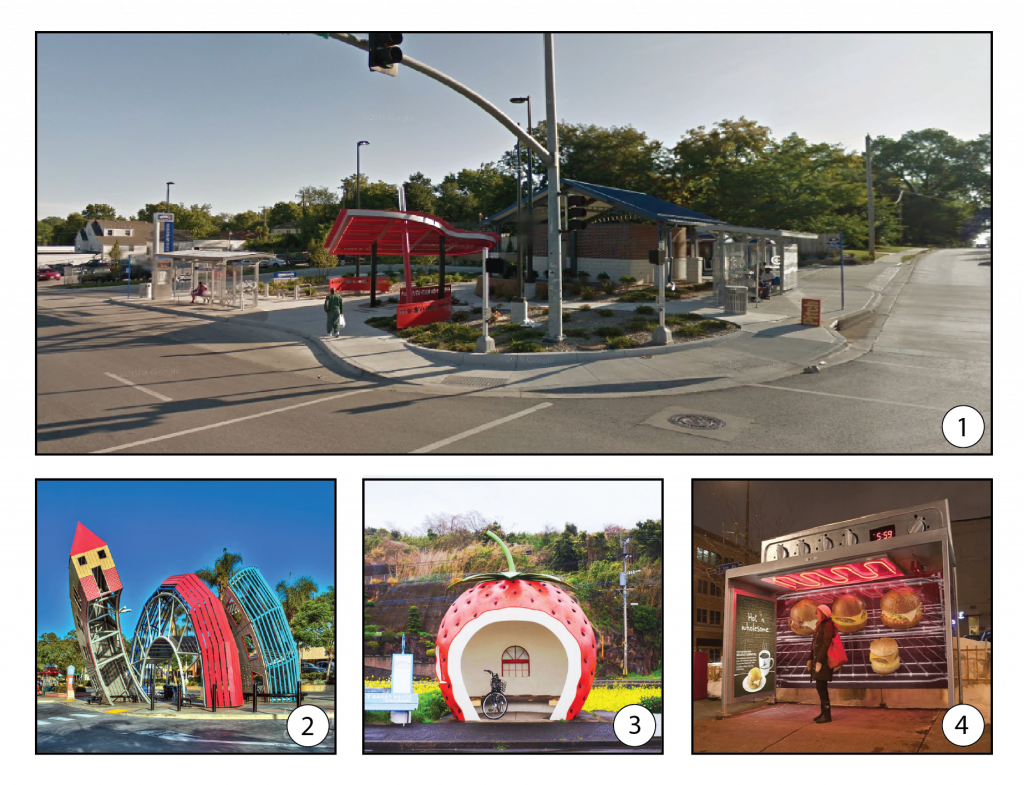A good bus stop has the same amenities offered by a good park: pedestrian scale lighting, a trash can, comfortable seating and a functional shelter. Great bus stops also include engaging elements such as a newspaper stand or a sculpture serving as the shelter itself. Above and below are examples of highly unusual bus stops that serve multiple purposes, including a toaster with a working heating element for frigid Minneapolis winters.

Bus stops should ideally be placed in a location of high density and mixed use: residential, retail and restaurants just a safe crosswalk away. Often, these well designed public spaces contain a park or floral landscaping as well as public art. A bus stop can be so much more than just a place to wait for a bus. A simple pole sign to indicate a bus route can be placed on any street corner, but the best bus stops are placed in locations where public transportation is both the literal and figurative vehicle that connects riders to the joys of city life.

